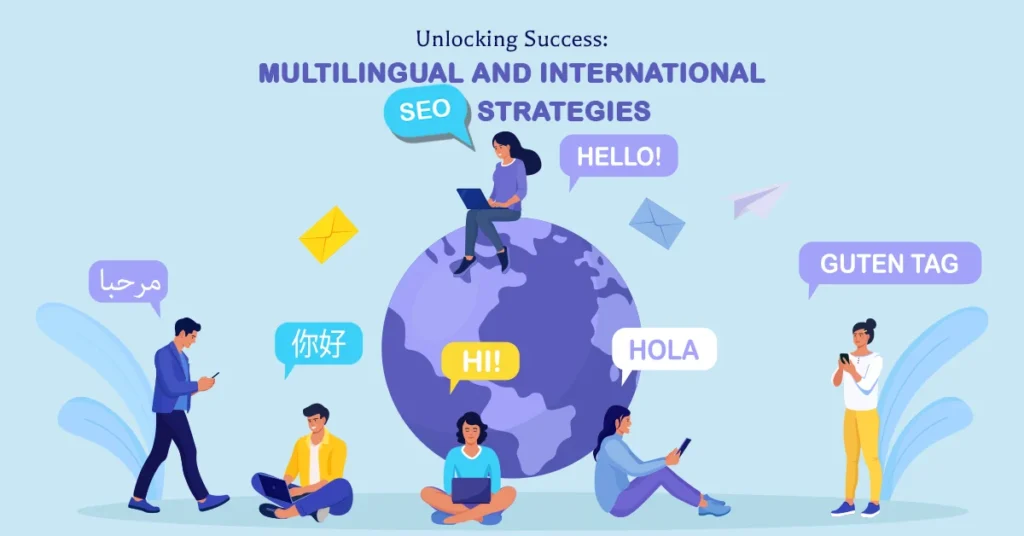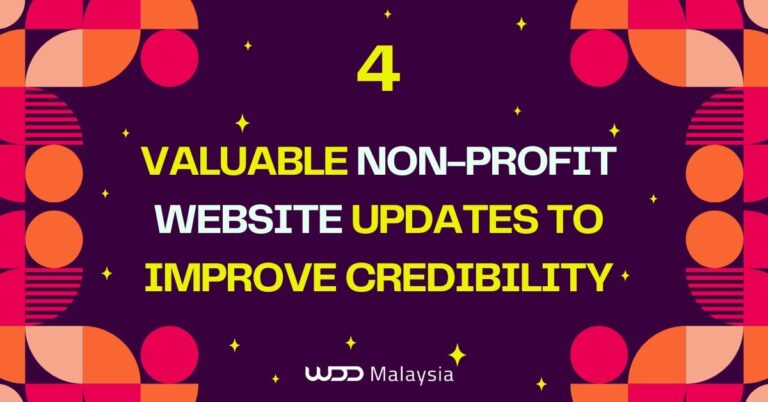
SEO thrives on reaching a global audience, making it essential to embrace multilingual and international strategies. The impact of such inclusive SEO approaches is profoundly transformative. By embracing multilingual and international SEO, businesses can tap into new markets, enhancing their SEO equity globally.
This blog will delve into the nuances of language optimization, advanced keyword research, and content localization strategies essential for unlocking success on an international scale. Utilizing the best SEO services is crucial for achieving success with these international SEO strategies.
Understanding Multilingual SEO
In the realm of SEO, the concept of Multilingual SEO holds a crucial position. Multilingual SEO involves optimising a website to cater to diverse linguistic audiences, ensuring that it ranks well in various language-specific search engine results. This approach goes beyond mere translation; it focuses on creating a seamless user experience for individuals who speak different languages.
Definition and Scope
What is multilingual SEO
When we talk about Multilingual SEO, we refer to the practice of search engine optimisation, which includes optimising web content in multiple languages to attract organic traffic from various language speakers. It involves adapting the website’s structure, content, and meta tags to align with different languages’ search queries.
Scope and relevance in today's digital landscape
The scope of Multilingual SEO extends far beyond traditional boundaries. In today’s interconnected world, businesses need to reach global audiences effectively. By implementing Multilingual SEO strategies, companies can enhance their online visibility, engage with international customers, and drive more conversions across different linguistic regions.
Differences from Regular SEO
The key differences between multilingual SEO and regular SEO
While Regular SEO focuses on optimising content for a single language and location, Multilingual SEO differs by tailoring websites for multiple languages and regions. This approach requires a deeper understanding of cultural nuances, local search trends, and user behaviour across diverse linguistic landscapes.
Why businesses need to focus on multilingual strategies
Embracing a multilingual SEO strategy is essential for businesses aiming to expand their global footprint. It allows companies to connect with a broader audience base, increase brand awareness internationally, and drive relevant traffic from different parts of the world.
Moreover, implementing a recommended multilingual SEO configuration can significantly improve a website’s ranking on search engines. For instance, international seo services in Malaysia offer tailored strategies for local businesses, focusing on affordable packages and results-driven approaches to achieve high rankings on Google.
Multilingual and International SEO Strategies
The concept of multilingual and international SEO strategies
The integration of Multilingual and International SEO Strategies is vital for businesses seeking global reach. While Multilingual SEO focuses on language optimization across multiple markets, international strategies encompass a broader range of optimization techniques tailored to specific countries or regions.
The importance for global reach
By adopting effective multilingual and international SEO strategies, companies can position themselves as industry leaders in the global marketplace. These strategies not only enhance search visibility but also foster stronger connections with diverse audiences worldwide.

Understanding Google’s Algorithm
How Google’s Algorithm Impacts SEO
Overview of Google’s algorithm
Google’s algorithm is a sophisticated and ever-evolving system designed to rank websites on search engine results pages (SERPs). This algorithm considers hundreds of factors, including keyword relevance, site structure, user experience, and backlinks, to determine the most relevant and useful results for any given search query.
Understanding the intricacies of Google’s algorithm is crucial for businesses aiming to optimize their websites effectively. By aligning their SEO strategies with the algorithm’s criteria, companies can improve their chances of ranking higher in search results, thereby increasing visibility and attracting more organic traffic.
Importance of understanding algorithm changes for SEO success
Staying abreast of Google’s algorithm updates is vital for maintaining and enhancing a website’s search engine ranking. Google frequently updates its algorithm to refine search results and improve user experience. These updates can significantly impact a website’s ranking, sometimes causing dramatic shifts in search visibility.
For instance, major updates like Google Panda and Google Penguin have historically reshaped the SEO landscape by penalizing low-quality content and manipulative link practices. By understanding and adapting to these changes, businesses can ensure their SEO strategies remain effective, helping them stay competitive in search results and continue driving organic traffic.
Implementing Multilingual SEO Strategies
In the realm of SEO, implementing Multilingual SEO strategies is a pivotal step for businesses looking to expand their reach across diverse linguistic landscapes. This section will delve into the essential components of keyword research, the contentful approach to multilingual SEO, and the significance of multilingual markup in optimising websites for global audiences.
Keyword Research
The importance of keyword research in multilingual SEO
SEO analysis serves as the foundation of any successful Multilingual SEO strategy. By identifying relevant keywords in different languages, businesses can tailor their content to meet the specific search queries of international users. Understanding local search trends and user behaviour is crucial for selecting the most effective keywords that resonate with diverse audiences.
Conduct keyword research for different languages
Conducting keyword research for multiple languages requires a comprehensive approach. Utilising tools such as Google Keyword Planner or LanguageLine can help identify high-traffic keywords in google search engine for various languages. Analysing competitor keywords and monitoring search engine algorithms are also key steps in refining multilingual keyword strategies.
Contentful Approach
The Contentful approach to multilingual SEO
The Contentful approach emphasises creating valuable and engaging content that resonates with target audiences across different linguistic regions, including specialized strategies like ecommerce SEO. By developing language-specific content tailored to local preferences and cultural nuances, businesses can enhance user engagement and build credibility on a global scale. This approach prioritises quality over quantity, ensuring that each piece of content adds value to the user experience.
Benefits of using a content management system
Utilising a robust content management system (CMS) like Nike.com can streamline the process of managing multilingual content effectively. CMS platforms offer features that facilitate content localization, translation workflows, and seamless integration with multilingual markup. By centralising content creation and publication, businesses can maintain consistency across language variants and optimise their websites for better search engine visibility.
Multilingual Markup
The role of multilingual markup in SEO
Multilingual markup plays a critical role in comprehensive search engine optimisation services by signalling to search engines the language and regional targeting of web pages. By implementing hreflang attributes correctly, businesses can ensure that users are directed to the most relevant language version based on their location and language preferences.
This markup enhances user experience by presenting localised content while improving website authority and rankings on search engine results pages.
How to implement multilingual markup effectively
Implementing multilingual markup involves adding hreflang tags to indicate language variations within a website. Businesses should create a clear mapping of language-specific URLs and specify language codes accordingly. Regularly auditing hreflang implementations and monitoring indexing status are essential steps in maintaining accurate multilingual markup across web pages.

Importance of hreflang Markup
In the realm of SEO, understanding the significance of hreflang markup is crucial for optimising multilingual SEO strategies effectively. The implementation of hreflang attributes plays a pivotal role in guiding search engines on language and regional targeting, ensuring that users are directed to the most relevant language version based on their preferences.
What is hreflang?
Definition of hreflang and its importance in multilingual SEO
Hreflang is an HTML attribute that informs search engines about the language and geographical targeting of a specific webpage. An SEO company can provide professional services for implementing hreflang, ensuring that search engines understand which version of a webpage to display to users based on their language preferences and location.
In the context of multilingual SEO, hreflang ensures that international users are directed to the appropriate language variant in google search results, enhancing user experience and increasing website engagement.
How hreflang helps search engines understand language and region targeting
By incorporating hreflang attributes into a website’s HTML code, businesses can provide clear signals to search engines regarding the linguistic and regional relevance of their content. This attribute enables search engines to serve the most appropriate language version of a webpage in search results, improving visibility among diverse audiences. Additionally, hreflang facilitates better user localization by presenting content tailored to users’ preferred languages and regions.
Implementing hreflang Markup
Step-by-step guide on implementing hreflang markup using Google Search Console
Begin by identifying the different language versions of your webpages and determining the corresponding language codes.
Insert the hreflang attribute within the <head> section of each webpage, specifying both the language code and optional region information.
Ensure consistency across all language variants by cross-referencing each page’s alternate versions using correct URL mappings.
Validate your implementation using tools like Google Search Console to confirm proper indexing and recognition by search engines.
Regularly monitor changes in user behaviour and search performance to refine your hreflang strategy for optimal results.
Common mistakes to avoid
Avoid using incorrect or mismatched language codes in your hreflang attributes, as this can confuse search engines and lead to improper content indexing.
Refrain from omitting essential alternate URLs for each language version, as this may result in incomplete or inaccurate indexing across different regions.
Steer clear of implementing conflicting directives within your hreflang annotations, as this can hinder search engine algorithms from properly interpreting your website’s intended targeting signals.
Best Practices
Best practices for using hreflang markup
Consistently update and maintain your hreflang annotations as new language versions or regions are added to ensure accurate targeting.
Monitor international traffic patterns regularly to identify opportunities for expanding or refining your multilingual content strategy based on user engagement metrics.
Collaborate with localization experts or utilise translation services like LanguageLine to ensure linguistic accuracy and cultural relevance across all content variations.
Leverage tools such as Google Search Console’s International Targeting report to assess the effectiveness of your hreflang implementation and address any indexing issues promptly.
How to monitor and maintain hreflang tags
Regularly audit your website’s hreflang tags, verifying that they accurately reflect each page’s intended target audience. Monitor changes in organic traffic patterns across different languages and regions, adjusting your strategy accordingly based on performance data. Implement structured data testing through tools like Google’s Structured Data Testing Tool to validate proper implementation of hreflang attributes throughout your website architecture.

Keyword Research for Multilingual SEO
In the realm of multilingual SEO, the foundation of success lies in comprehensive keyword research strategies that resonate across diverse linguistic landscapes. Understanding the nuances of language-specific search queries and user intent is paramount to crafting a compelling SEO strategy that drives organic traffic and enhances website visibility on search engines.
Importance of Keywords
The significance of keywords in multilingual SEO
Keywords serve as the linchpin of any multilingual SEO endeavour, acting as bridges that connect users to relevant content in their preferred languages. By incorporating targeted keywords strategically within website content as part of broader digital marketing strategies like search engine marketing, businesses can improve their chances of ranking higher on search engine results pages (SERPs) and attracting qualified international traffic. The right keywords not only enhance visibility but also facilitate meaningful engagement with diverse audiences worldwide.
How to select the appropriate keywords for different languages
Choosing the right keywords for multilingual content involves a blend of art and science. Businesses must conduct thorough research into local search trends, cultural preferences, and language nuances to identify high-impact keywords. Leveraging tools like Google Keyword Planner or SEMrush can provide valuable insights into popular search terms across various languages, enabling businesses to tailor their content effectively. Moreover, analysing competitor keyword strategies and monitoring keyword performance metrics are essential steps in refining multilingual keyword selection.
Tools and Techniques
Innovative tools and techniques for conducting keyword research
In the dynamic landscape of multilingual SEO, staying ahead requires leveraging cutting-edge tools and techniques to uncover hidden opportunities and optimise content effectively. Platforms like Ahrefs or Moz Keyword Explorer offer robust features for identifying competitive keywords, analyzing search volumes, and tracking keyword performance over time.
Additionally, employing advanced techniques such as semantic keyword analysis or long-tail keyword optimization can help businesses refine their multilingual keyword strategies for maximum impact.
Real-world examples of effective methods for conducting keyword research
Effective keyword research extends beyond mere data collection; it involves interpreting insights to drive actionable outcomes. For instance, conducting a thorough competitor analysis can reveal untapped keyword opportunities or emerging trends in specific language markets.
Collaborating with native speakers or linguistic experts to validate keyword choices ensures linguistic accuracy and cultural relevance in multilingual content creation. By combining quantitative data with qualitative feedback, businesses can develop a holistic approach to multilingual keyword research that resonates with diverse audiences.
Content Optimization
Optimising content using selected keywords
Once businesses have identified target keywords for multilingual content, the next step is optimising website content to align with these strategic choices effectively. Integrating keywords naturally within web copy, meta descriptions, headers, and image alt text signals search engines about the relevance of the content to user queries.
Crafting engaging and informative content around selected keywords not only boosts SEO performance but also enhances user experience by delivering valuable information tailored to specific language audiences.
Pivotal role of keywords in determining content ranking
Keywords play a pivotal role in determining where a website ranks on search engine results pages (SERPs) for specific queries across different languages. Search engines evaluate factors such as keyword density, placement, relevance, and user engagement metrics when assessing the quality of web content.
By aligning content closely with chosen keywords while maintaining readability and coherence, businesses can improve their chances of securing top positions on SERPs and driving organic traffic from diverse linguistic regions.

Off-Page SEO and Link Building
Importance of Off-Page SEO
Off-page SEO encompasses all the activities conducted outside of a website to improve its search engine rankings. This includes link building, social media marketing, and online reputation management. Off-page SEO is crucial because it helps search engines understand how the rest of the internet views your website.
High-quality backlinks from reputable sites act as endorsements, signaling to search engines that your content is valuable and trustworthy. This, in turn, can significantly boost your website’s authority and ranking in search engine results pages (SERPs).
Translation and Localization
In the realm of Multilingual SEO, the distinction between translation and localization plays a pivotal role in crafting a compelling online presence that resonates with diverse linguistic audiences. While translation focuses on converting content from one language to another, localization delves deeper into adapting content to suit cultural nuances, preferences, and localised search engine algorithms.
Translation vs. Localization
The difference between translation and localization
Translation involves converting text from one language to another while aiming to retain the original meaning and context. On the other hand, localization goes beyond mere translation by considering cultural sensitivities, idiomatic expressions, and regional variations to ensure that content feels native to the target audience. By embracing both practices, businesses can bridge linguistic gaps effectively while fostering authentic connections with international users.
Why both are important for multilingual SEO
In the landscape of Multilingual SEO, incorporating both translation and localization strategies is essential for optimising websites across different languages and regions. While translation helps expand reach by making content accessible in various languages, localization enhances user engagement by tailoring content to specific cultural contexts.
This dual approach not only boosts search engine visibility but also cultivates trust and credibility among global audiences. Specialist internet marketing services are essential for effective multilingual SEO, as they encompass strategies like link building and content marketing.
Best Practices
Best practices for translation and localization
Conduct thorough research into target markets’ linguistic preferences, local customs, and search behaviours to inform your translation and localization strategies effectively.
Collaborate with native speakers or professional linguists proficient in languages like French, German, or Global Spanish to ensure linguistic accuracy and cultural authenticity.
Prioritise consistency in tone, style, and messaging across all language variants to maintain brand identity while catering to diverse audiences.
Regularly update translated content based on user feedback, market trends, and evolving search engine algorithms to stay relevant in competitive international markets.
How to ensure accuracy and cultural relevance
Ensuring accuracy and cultural relevance in translated content requires a nuanced approach that blends linguistic precision with cultural sensitivity. By leveraging tools like Google Translate or professional translation services such as Nike, businesses can streamline the translation process while maintaining quality standards.
Additionally, conducting user testing or seeking feedback from local communities can provide valuable insights into how well translated content resonates with target audiences. Striking a balance between linguistic accuracy and cultural resonance is key to building meaningful connections with global users through localised search engine optimization efforts.
Tools and Resources
Tools and resources for effective translation and localization
Utilise online platforms like Google Translate or DeepL for quick translations of website content into multiple languages.
Explore professional translation services such as LanguageLine or Gengo for high-quality translations tailored to specific industries or sectors.
Leverage Content Management Systems (CMS) like WordPress or Drupal that offer multilingual plugins for seamless integration of translated content across websites.
Consider investing in localization software like Smartling or PhraseApp for managing multilingual projects efficiently while ensuring consistency in tone and terminology across language variants.
Examples of successful localization strategies
Successful localization strategies often involve a blend of technology-driven solutions and human expertise to deliver culturally relevant content that resonates with global audiences:
Nike’s Global Approach: Nike’s website exemplifies effective localization by offering tailored experiences for users worldwide through region-specific product offerings, localised language options, and culturally sensitive marketing campaigns.
Google’s Multilingual Initiatives: Google implements robust localization strategies by adapting its search engine algorithms to account for regional dialects, idiomatic expressions, and linguistic variations across different countries.
Airbnb’s Cultural Sensitivity: Airbnb prioritises cultural sensitivity in its platform design by incorporating user-generated content reviews in multiple languages, providing travellers with authentic insights into local experiences worldwide.
By drawing inspiration from these successful examples of localization strategies, businesses can enhance their global reach while fostering meaningful connections with diverse audiences through meticulously crafted multilingual SEO practices.

Best Practices for International SEO
In the realm of international SEO, implementing best practices is essential to enhance a website’s visibility and engagement across diverse global markets. By focusing on market research, technical SEO optimization, and leveraging monitoring and analytics tools, businesses can refine their international SEO strategies for maximum impact.
Market Research
The importance of market research in international SEO
When delving into international SEO, thorough market research serves as the foundation for success. Understanding target audiences’ linguistic preferences, cultural nuances, and search behaviours is crucial for tailoring content that resonates with diverse users worldwide. Market research enables businesses to identify untapped opportunities, assess competitive landscapes, and develop strategic insights to guide their international SEO efforts effectively.
How to conduct thorough market research
Conducting comprehensive market research involves analysing demographic data, consumer trends, and competitor strategies across different regions. Utilising tools like SEMrush or Ahrefs can provide valuable insights into keyword performance, backlink profiles, and organic traffic patterns in specific countries or languages.
Collaborating with local experts or conducting surveys among target audiences can offer qualitative feedback to supplement quantitative data analysis, ensuring a holistic approach to international SEO strategy development.
Technical SEO
The role of technical SEO in international strategies
Technical SEO plays a pivotal role in professional services SEO campaigns by optimising websites for international audiences through tailored SEO strategies that enhance site performance, user experience, and search engine crawlability.
Implementing hreflang attributes correctly ensures that search engines understand language variations within a website and serve relevant content to users based on their location and language preferences. Additionally, optimising site speed, mobile responsiveness, and schema markup enhances a website’s visibility across global search results while improving overall user engagement metrics.
How to optimise a website for international audiences
Optimising a website for international audiences involves creating a seamless user experience that caters to diverse linguistic preferences and cultural expectations. Implementing geotargeting settings in Google Search Console helps specify target countries or regions for localised content delivery.
Structuring URLs logically with language subdirectories or subdomains facilitates easy navigation for users accessing multilingual content. Furthermore, ensuring proper canonical tags and XML sitemaps aid search engines in understanding site structure while improving indexation rates across different language variants.
Monitoring and Analytics
The importance of monitoring and analytics
Monitoring website performance through analytics tools is essential for evaluating the effectiveness of international SEO strategies over time. Tracking key performance indicators such as organic traffic growth, conversion rates by language segment, and bounce rates across different regions provides valuable insights into user behaviour patterns.
By leveraging analytics data effectively, businesses can identify areas for improvement, refine content strategies based on user engagement metrics, and adapt their international SEO approach to meet evolving market demands successfully.
How to use data to improve international SEO efforts
Analysing data from monitoring tools like Google Analytics or SEMrush enables businesses to make informed decisions regarding content optimization, keyword targeting, and user experience enhancements for international audiences.
By identifying high-performing keywords in specific languages or regions through data-driven insights, companies can refine their multilingual content strategy to align with user intent effectively. Moreover, A/B testing localised landing pages or call-to-action elements based on analytics findings allows businesses to iterate on successful tactics while continuously improving their international SEO performance metrics.

Conclusion
In the ever-evolving landscape of Multilingual SEO and International SEO Strategies, the importance of catering to diverse linguistic audiences cannot be overstated. By embracing the nuances of language optimization and implementing robust multilingual strategies, businesses can unlock a world of opportunities for global expansion. From keyword research to content localization, every aspect of multilingual and international SEO plays a pivotal role in enhancing a website’s visibility and engagement across different linguistic regions.
As businesses navigate the complexities of optimising their online presence for an international audience, the role of hreflang attributes in guiding search engines on language targeting on page optimisation becomes increasingly crucial. Ensuring that users are directed to the most relevant language version based on their preferences is key to delivering a seamless user experience that fosters trust and credibility.
Language lies at the heart of effective communication, and in the realm of website optimization, crafting compelling content that resonates with diverse audiences is paramount. By prioritising quality over quantity and tailoring content to suit cultural nuances, businesses can establish themselves as industry leaders in the global marketplace.
In conclusion, the journey towards unlocking success through Multilingual SEO requires a deep understanding of linguistic diversity, user intent, and regional preferences. By building a website that speaks the language of its visitors, companies can transcend geographical boundaries and connect with audiences on a deeper level. Embracing multilingual approaches not only enhances search visibility but also cultivates meaningful relationships with users worldwide.
As businesses continue to expand their online footprint across different languages and regions, staying abreast of evolving trends in language optimization, website structure, and international SEO best practices will be essential. By leveraging innovative tools, monitoring analytics data diligently, and refining strategies based on user feedback, companies can position themselves for sustained success in an increasingly interconnected digital landscape.





